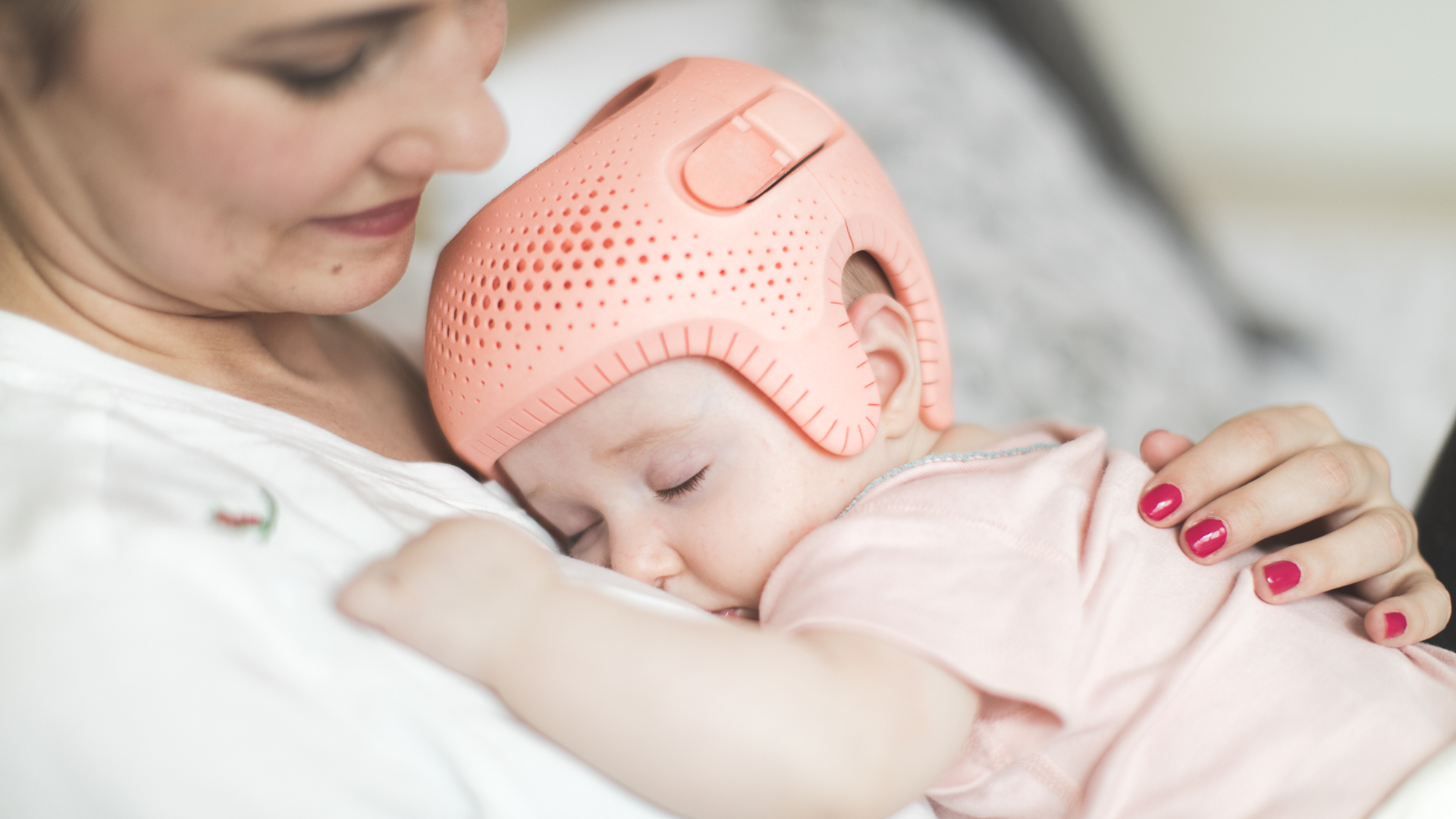
How does plagiocephaly affect the head and face?
Plagiocephaly is predominantly identified by a flattening either at the back or to either side of the skull. As a direct result of this flattening, facial features can become misaligned and other issues may develop. The facial features subject to the most change include the eyes and the ears. As such, facial asymmetry is also regarded as a good indication of plagiocephaly.
Do cranial helmets influence ear position in babies with plagiocephaly?
In 2012, a paper was published in the Journal of Craniofacial Surgery exploring whether or not helmet therapy, such as TiMbandAir treatment, influences the ear position in babies with positional plagiocephaly.
This is a question that we are often asked but it’s a difficult one to answer, as the changes can be so subtle.
The results of the research showed that the improvement in ear position averaged 30 percent, which is significant. However, no strong linear correlation was found between the changes of the CVAI (cranial vault asymmetry index) and the ear shift.
Here is an excerpt from the paper, which is available to read in full.
Background And Purpose
Helmet therapy is widely accepted in the treatment of severe positional plagiocephaly. The improvement of the cranial asymmetry under therapy is evident, but parents are also concerned about the ear shift. Our study investigated the influence of helmet therapy on the position of the ears and analyzed the reliability of clinical observations regarding cranial asymmetry and ear shift.
Patients And Methods
Three-dimensional stereophotogrammetry of 80 infants with severe positional plagiocephaly was performed before and after helmet therapy. The cranial vault asymmetry index (CVAI) and ear shift were measured and statistically compared. The correlation between the change of CVAI and ear shift was investigated. Three surgeons visually evaluated the treatment results on three-dimensional images independently with a standard questionnaire. The results were compared with the three-dimensional measurements.
Results
Sixty infants had a relevant initial ear shift. Under therapy, the shift was improved significantly by a mean of 29.8% (P < 0.001). Twenty infants with an initial straight ear line statistically deteriorate under therapy (P < 0.0001). We found no strong linear correlation between the changes of the CVAI and the ear shift. Analysis of the questionnaire revealed a good correlation between the clinical impression and three-dimensional measurements for the head asymmetry, whereas observations regarding changes in the ear shift were not reliable.
Conclusions
Helmet treatment significantly improves an initial malposition of the external ear in infants with positional plagiocephaly. A severe ear shift can be associated with a moderate CVAI and vice versa. In contrast to the CVAI, small changes of the ear shift cannot be evaluated reliably by clinical investigation.
Journal of Craniofacial Surgery: September 2012 – Volume 23 – Issue 5 – p1301-1305 doj: 10.1097/SCS.0b013e3e31825653fa
Advice for parents
If you have noticed an asymmetry in your child’s facial features, such as misaligned ears or differently positioned and sized eyes, contact us to arrange your free, no-obligation plagiocephaly assessment. Alternatively, if you would like to learn more about plagiocephaly and other head shape deformities, head to our blogs or browse the Technology in Motion website.


